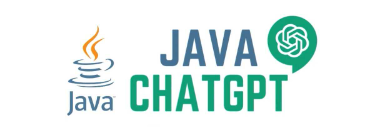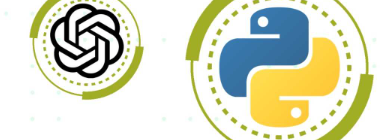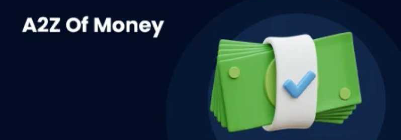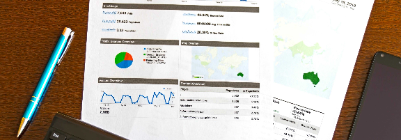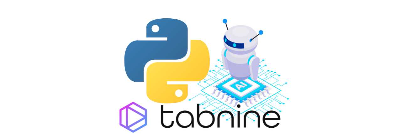How to pay lower tax under old tax regime? This much deduction can help you save more income tax than new tax regime Moreover, for salary income of Rs 15 lakh you need to claim atleast Rs 5,93,750 as tax deductions so as to achieve equilisation level of tax with new tax regime. If you claim more deductions beyond this equilisation point you will save more tax in old tax regime than new
After the 2025 budget announced no income tax for people with income up to Rs 12 lakh it has become an easy decision for people with income up to 12 lakh. But the decision between old and new tax regime may not be so easy for people with higher income especially when they are eligible for significant deductions under old tax regime. The decision would be easier if you knew how much deduction you need to claim to have higher tax saving under the old tax regime. This will also help you assess whether it is feasible for you to consider the old tax regime, or it will be better to move to new tax regime.Budget with ET
Tax calculator
Equilisation point for tax-savings under old and new tax regime
The table below explains how much tax deductions under the old tax regime you need to claim to achieve the equalisation point where tax paid under the old and new tax regime remains the same. If you claim higher deductions than the amounts mentioned below in the equilisation table, then you will pay less tax in the old tax regime as compared to the new tax regime. This equilisation point is important to take the judgement call for opting for a new or old tax regime if your salary income is above Rs 12.75 lakh.Equilisation table
| Gross taxable income | Income tax payable under old tax regime | Proposed income tax under new tax regime | Deductions to pay same tax in both tax regimes |
| Rs 12,75,000 | Nil | Nil | Rs 7,75,000 |
| Rs 15,00,000 | Rs 97,500 | Rs 97,500 | Rs 5,93,750 |
| Rs 16,00,000 | Rs 1,13,100 | Rs 1,13,100 | Rs 6,18,750 |
| Rs 20,00,000 | Rs 1,92,400 | Rs 1,92,400 | Rs 7,58,333 |
| Rs 24,75,000 | Rs 3,12,000 | Rs 3,12,000 | Rs 8,50,000 |
| Rs 25,00,000 | Rs 3,19,800 | Rs 3,19,800 | Rs 8,50,000 |
In the above table it is assumed that a salaried individual is claiming only Rs 75,000 as standard deduction and is not claiming NPS deduction for employer contribution.
Deductions which can be claimed under the new tax regime
Only two deductions- standard deduction (only salaried) and NPS contribution made by the employer under Section 80CCD (2) can be claimed in the new tax regime. The maximum amount of deduction that can be claimed under Section 80 CCD (2) is 14% of basic salary plus dearness allowance.Deductions which can be claimed under the old tax regime
Some of the deductions which you can claim under the old tax regime is:Section 80C: For making investments in eligible instruments taxpayers can claim up to Rs 1.5 lakh as tax deduction under section 80C. Your investment into EPF, PPF, SCSS, NPS, SSY, ELSS, ULIP and tax saving FD qualify for 80C deduction. Similarly expenses like school fee for children, life insurance premium, principal component of home loan etc qualify for 80C deduction.
| Deductions under Old Tax Regime | Amount | Deductions under New Tax Regime | Amount |
| Section 80C (Investment in PPF, NSC, Life Insurance Premium, ELSS, etc.) | Up to Rs 1.5 lakh | Not available | - |
| Section 80D (Health insurance premium) | Varies based on premium,age | Not available | - |
| Standard Deduction (for salaried individuals) | Rs 50,000 | Available | Rs 75,000 (FY 2024-25, 2025-26) and Rs. 50,000 (FY 2023-24) |
| House Rent Allowance (HRA) | Available (based on actuals) | Not available | - |
| Leave Travel Allowance (LTA) | Available (based on actuals) | Not available | - |
| Interest on Housing Loan (Section 24) (for self-occupied property) | Deduction up to Rs 2 lakh | Not available | - |
| Interest on Housing Loan (Section 24) (for let out property) | Available (based on actuals) | Available (based on actuals) | |
| Section 80E (Interest on education loan) | Available | Not available | - |
| Section 80G (Donations to charitable institutions) | Available (based on donation amount) | Not available | - |
| Section 80TTA/80TTB (Interest on savings bank account/interest for senior citizens) | Up to Rs 10,000 u/s 80TTA (Rs 50,000 for senior citizens u/s 80TTB) | Not available | - |
| Entertainment Allowance | Available for government employees | Not available | - |
| Professional Tax (for salaried individuals) | Actual amount paid, up to Rs 2,500 annually | Not available | - |
| Additional Depreciation (Section 32(1)(iia)) | Available for businesses | Not available | - |
| Income from House Property Loss Set-off | Allowed (set off with other income) | Not available | - |
| Children’s Education Allowance | Rs 100 per month per child (up to two children) | Not available | - |
| Transport Allowance (for specially abled) | Rs 1,600 per month | Not available | - |
| Section 80CCD(1B) | Up to Rs 50,000 made to NPS | Not available | |
| Section 80EEA | Up to Rs 1.5 lakh deduction for interest payments on loan for first-time residential house property acquisition (loan sanctioned between 1st April 2019 to 31st March 2022) | Not available | |
| Section 80EEB | Up to Rs 1.5 lakh deduction for interest payments on loan for purchase of Electric Vehicle (loan sanctioned between 1st April 2019 to 31st March 2023) | Not available | |
| Section 80CCD(2) - Employer's Contribution to NPS | Available - Govt - 14% of their salary (basic + DA) Others - 10% of salary (basic + DA) | Available | Government - 14% of their salary (basic + DA) Others - 14% of salary (basic + DA) |
Section 80D: If you are below the age of 60, you can claim up to Rs 25,000 deduction for paying health insurance premium. An additional deduction for insurance (premium) for parents is available up to Rs 25,000 if they are less than 60 years of age. If the parents are 60 years old or above, the deduction amount could go up to Rs 50,000.
In a normal scenario a person with senior citizen parents can easily claim a deduction of Rs 75000.
Section 80CCD(1B): For making investment in the National Pension System, taxpayers can claim up to Rs 50,000 as tax deduction over and above the Section 80C limit. Do note salaried employees can also claim Section 80 CCD (2) tax deduction for employer contribution to NPS.
Home loan Interest under section 24b: If you have taken a home loan to purchase a flat or construction of a house then you can very well claim a deduction on interest paid for a home loan. The total deduction that can be claim under this section in a given financial year is Rs 2 lakh.
House Rent Allowance (HRA): This is one of the most significant deductions for a salaried person who is living on rent. In case of a rented house in metro city the HRA allowance goes up to 50% of the basic salary. It is 40% for the non-metro cities. So, a person with an annual salary income of Rs 12 lakh could typically have basic salary of Rs 50,000 per month or above. Which means HRA of Rs 25,000 per month and above in metro cities, making the annual HRA component of Rs 3 lakh or above. The final deduction amount will depend upon the actual rent and basic salary.
A salaried person with a higher basic salary like Rs 1 lakh can easily claim HRA up to Rs 6 lakh if he lives in metro city and gets HRA as part of salary and actually pays this rent. The tax deduction amount would be lower than the HRA, though. The final tax deduction amount will be actual rent paid (up to HRA or 50%/40% of the basic) deducted by 10% of the salary.
Donations: If you make donations to eligible institutions, you can get deductions for such donations up to 100% of the donated amount. However, such deduction is limited to 10% of gross adjusted income. So, if your gross adjusted income is Rs 15 lakh then you can very well get a deduction up to Rs 1.5 lakh for such donation.
This story originally appeared on: India Times - Author:Faqs of Insurances

